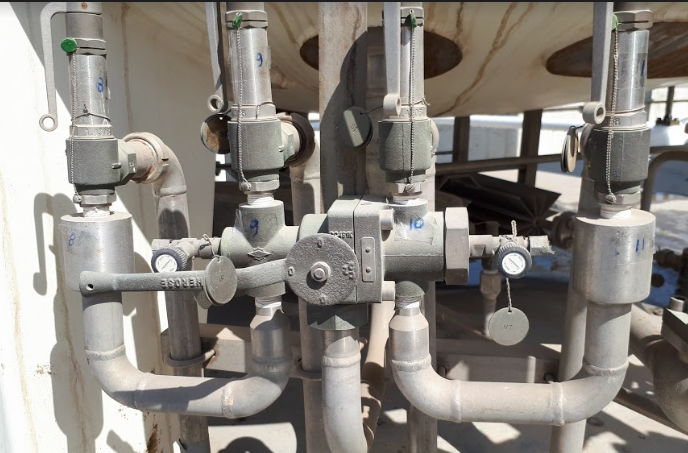Tank safety valve inspection
The integrity and reliability of tank safety valves are critical to ensuring the safe operation of pressure vessels and storage tanks. These valves play a pivotal role in safeguarding against over-pressurization, which can lead to catastrophic failures with severe consequences for both personnel and property.
Pressure vessel design codes such as ASME Section VIII Division 1 & 2, EN 13445:2019, and ISO standards provide the framework for ensuring that safety valves are correctly selected, installed, and maintained. The primary aim is to ensure that these valves operate reliably under normal conditions and can release pressure effectively in an emergency.
The process of inspecting tank safety valves involves several stages, including visual inspection, functional testing, and non-destructive testing (NDT). Visual inspections are conducted first to check for any visible damage or wear. Functional tests assess whether the valve opens and closes as expected under specified conditions. NDT methods such as ultrasonic testing, radiography, and magnetic particle inspection may be used to detect hidden flaws that could compromise the integrity of the valve.
Inspection intervals are governed by regulations and codes, typically requiring periodic re-certification every 12-36 months depending on the service environment. Regular inspections ensure early detection of potential issues before they escalate into failures. The use of advanced technology such as smart sensors can provide continuous monitoring between scheduled inspections.
For procurement departments, understanding these inspection processes is essential to ensure compliance with regulatory requirements and industry standards. This knowledge also helps in selecting the right suppliers who adhere to stringent testing protocols. Compliance officers must stay updated on changing regulations to maintain consistent adherence within their organizations. R&D engineers can leverage this information to innovate safer designs while maintaining efficiency.
Quality managers play a crucial role by overseeing inspection procedures and ensuring that all necessary documentation is maintained for audits. By focusing on these aspects, organizations not only enhance safety but also build a reputation for reliability and integrity in the market.
Quality and Reliability Assurance
- Compliance with Standards: Adherence to international standards such as ASME Section VIII, EN 13445:2019, and ISO/IEC 8617-1 ensures that all inspection processes meet industry benchmarks.
- Data Recording: Comprehensive documentation of each inspection is crucial for tracking trends and identifying potential areas for improvement.
- Continuous Improvement: Regular reviews of inspection data contribute to the ongoing enhancement of safety valve performance.
- Certification: Re-certification every 12-36 months as per regulatory requirements guarantees that valves remain in peak operational condition.
International Acceptance and Recognition
The inspection of tank safety valves is widely recognized across international boundaries. Organizations involved in the oil and gas, petrochemical, chemical processing, and power generation sectors are particularly vigilant about compliance with these inspections.
Regulatory bodies such as the American Society of Mechanical Engineers (ASME) and European Committee for Standardization (CEN) issue guidelines that are globally accepted. These standards provide a harmonized approach to valve inspection, ensuring consistency in quality across different countries and regions.
The importance of international acceptance cannot be overstated, especially when dealing with global supply chains or multinational operations. By adhering to these standards, companies can ensure that their products meet the highest safety and performance criteria recognized worldwide. This not only enhances compliance but also fosters trust among stakeholders both domestically and internationally.
Use Cases and Application Examples
| Application | Description |
|---|---|
| Risk Management for Oil and Gas Industry | Inspecting safety valves in oil rigs helps prevent explosions due to over-pressurization, safeguarding both personnel and equipment. |
| Petrochemical Plant Safety | Regular inspections ensure that storage tanks do not exceed safe pressure limits, minimizing the risk of catastrophic failure during production processes. |
| Chemical Processing Facilities | Safety valves in chemical processing plants are inspected to prevent accidents caused by excessive pressure, which could lead to toxic leaks or explosions. |
| Power Generation Plants | In thermal power stations, the integrity of safety valves is crucial for preventing steam-related incidents that can cause significant damage and disruption. |





